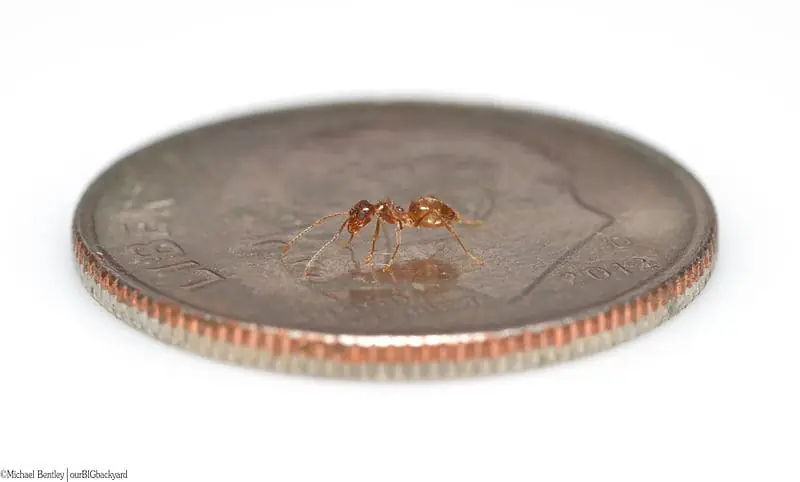
You may not have heard of tawny crazy ants just yet, but chances are you soon will. This exotic, invasive ant species, native to South America, has made its way to the Southeastern U.S. in the last few years and is expected to spread quickly through the region. Tawny crazy ants presently pose the most immediate threat to Gulf Coast states, including Florida.
These ants generally begin to appear at the end of July and their population peaks in September. Here’s what you need to know about this aggressively spreading species.
Why are they “crazy”?
Also known as Rasberry crazy ants, these insects’ behavior is erratic and, unlike most other species, disorganized. There seems to be no pattern to how they move around or forage for food. “Crazy” could also apply to anyone who has to deal with an infestation, because tawny crazy ants reproduce at an astounding rate. It’s been reported that when an infestation has been treated with pesticides, the dead ants appear to be a “snowdrift” type of pile. Even indoors, there can be millions of them that can be swept up with dustpans.
Tawny crazy ants pose several types of threats.
According to Scientific American, tawny crazy ants are harming the environment, homes, and even electronics.
These ants coat themselves with a chemical that protects them from the deadly acid that fire ants secrete. When fire ants can’t keep the tawny ants’ population in check, tawny ants can decimate the spider and other arthropod populations that support local birds (which don’t typically eat the tawny crazy ants). As undesirable as fire ants are, they do keep some other types of insects from getting into your home, but they’re helpless against a tawny crazy ant home invasion.
One particularly odd aspect of tawny crazy ant behavior is their attraction to and infestations of electronic and electrical equipment. Because they don’t create nests or mounds, they will inhabit any sort of shelter and seem to prefer cavities inside items such as fuse boxes, air conditioners, pumps, and even computers and mobile phones. Once inside these devices, they create connections between contacts that cause circuits to short out. Tom Regula, owner of McGowan’s Heating & Air Conditioning here in Jacksonville, said they have customers whose air conditioners have been shorted out because of the tawny ants. Once the ants get in the contactor, they cause the AC unit to short out—then his technicians have to clean and sometimes replace the contactors. What’s worse is they don’t stop, they’ll keep coming back causing problems until they’re properly dealt with.
This would be enough of a problem by itself, but tawny crazy ants go even further: As they’re being electrocuted, they release a chemical that sends an “attack” message to the other ants, which quickly attracts even more ants to the scene.
These ants can also be found in other sheltered spots, such as under yard debris and in areas where garbage is stored, so you may find them anywhere. There is one good bit of news, however: Tawny crazy ants have a very mild bite.
Exterminating tawny crazy ants.
Tawny crazy ants aren’t attracted to many commonly used baits. That — and their sheer numbers — can make exterminating them very challenging. Since multiple treatments may be required to prevent tawny crazy ant populations from coming back in even stronger numbers, the task should be left to professional pest control experts.
If you see signs of these pests in or around your property, contact Turner Pest Control as soon as possible.



